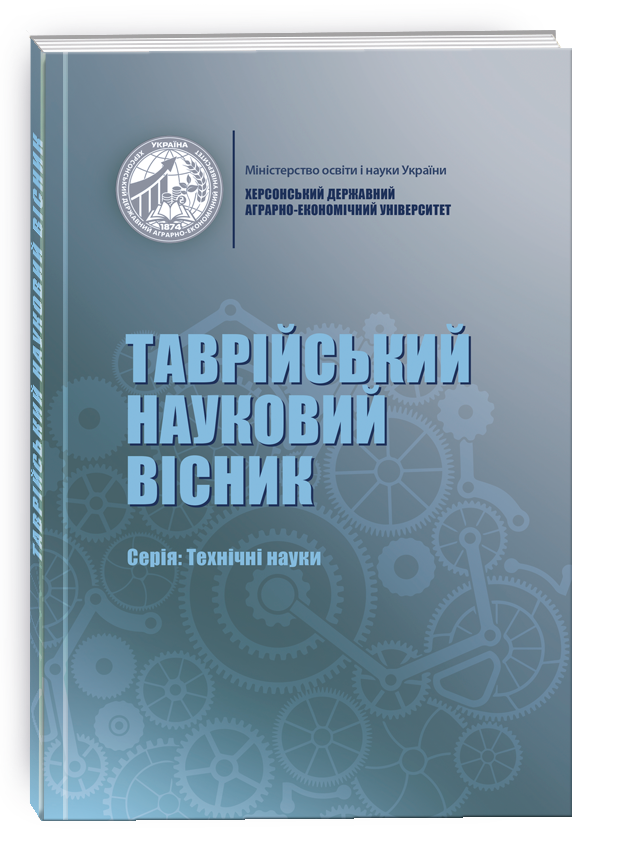SCIENTIFIC SUBSTITUTION AND DEVELOPMENT OF A COMPOSITE MIXTURE FOR THE PRODUCTION OF PASTA PRODUCTS
DOI:
https://doi.org/10.32782/tnv-tech.2025.1.37Keywords:
wheat flour, lupin flour, chia seed flour, composite mixture, pastaAbstract
The search for new sources of proteins based on plant raw materials and the justification of ways of their practical application in the food industry is an important component in ensuring the production of products with balanced composition, including low-calorie, specialized and functional products, accessible to different social groups of consumers. Preliminary research into the production and use of proteins of plant origin allows us to highlight the use of different types of flour as a promising direction.Based on studies of the chemical composition of different types of flour, the choice of lupine flour and chia seed flour as a natural source of functional food ingredients is justified.The choice of a rational concentration of lupine flour in the production of pasta, which is 10% of the total mass of wheat flour, is scientifically justified, this allows you to increase the content of protein and dietary fiber in the finished product while maintaining quality.It was found that adding chia seed flour to pasta dough within 5…7,5% of the weight of wheat flour does not change the quality of pasta both before and after cooking, enriching the finished product with dietary fiber and ω-3 fatty acids.The rational ratio of lupine flour and chia seed flour in the pasta recipe was experimentally established to enrich the product with protein, dietary fiber, increase the content of ω-3 fatty acids while maintaining high organoleptic and physicochemical indicators. Composite mixtures of the following composition were developed: composite mixture 1 (CM1): 85% wheat flour, 10% lupine flour, 5% chia seed flour; composite mixture 2 (CM2): 82,5% wheat flour, 10% lupine flour, 7,5% chia seed flour.As part of the study of the quality of the composite mixture for the production of pasta, the rational amount of adding lupine flour and chia seed flour was determined, which amounted to 10% and 5%, respectively, of the weight of wheat flour. Adding alternative types of flour in smaller quantities is ineffective in terms of enriching products with protein, dietary fiber, and ω-3 fatty acids. An increase in the content of lupine flour (more than 10%) and chia seed flour (more than 5%) in the composite mixture leads to a deterioration in organoleptic properties. The quality assessment showed that in terms of organoleptic and physicochemical properties, the sample of pasta made from composite mixture 1 (85% wheat flour, 10% lupine flour, 5% chia seed flour) is not inferior, and in some indicators even exceeds the quality of the control sample (pasta made according to the classic recipe).
References
Воробей Л.В., Сидоренко О.П. Адаптогени у складі функціональних продуктів: досвід та перспективи. «Функціональне харчування». 2022. № 7. С. 33–39.
Кумпан С.П. Функціональні харчові суміші: перспективи та інновації. «Харчові технології». 2023. № 12. С. 21–30.
Застосування інноваційної технології отримання функціональних продуктів харчування на основі рослинної сировини / І.Г. Бабанов, О.І. Бабанова, В.М. Михайлов, А.О. Шевченко, С.В. Прасол // Вісник Сумського національного аграрного університету. 2023. Вип. 4 (54). С. 16–21.
Куманцов І.Ю. Розробка технологій функціональних харчових продуктів. «Технологія та якість харчових продуктів». 2020. № 4. С. 15–20.
Sylchuk T.A., Kyrpichenkova O.M., Dochynets I.V. Use of different types of flour for bread and flour confectionery products in restaurant establishments. Bulletin of Sumy National Agrarian University. The Series: Mechanization and Automation of Production Processes. 2024. № 3 (57). С. 32–36.
Кошель О., Савченко М., Перцевой Ф., Маренкова Т. Удосконалення технології кексів з використанням люпинового борошна. Вісник Хмельницького національного університету. Технічні науки. 2024. № 5. С. 145–150.
Демічковська М. Технологія лавашу з використанням нетрадиційної сировини. Праці Таврійського державного агротехнологічного університету імені Дмитра Моторного. 2019. № 19 (1). С. 217–225.
Перспектива використання насіння чіа як фортифікаційної добавки до хлібобулочних виробів / О.Л. Гуменюк, Ж.В. Замай, Р.М. Волкова, О.Б. Хребтань, В.А. Тітенко // Вісник Львівського торговельно-економічного університету. Технічні науки. 2021. № 26. С. 31–38.







